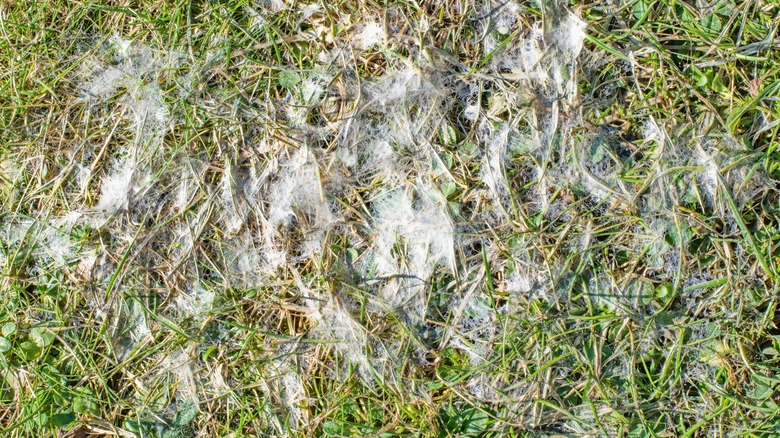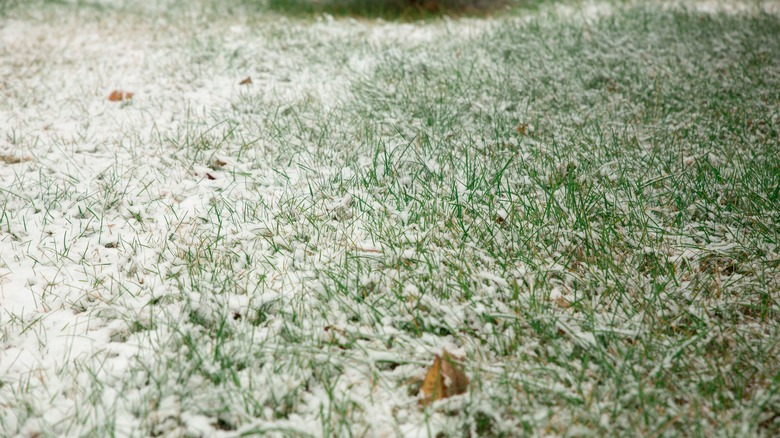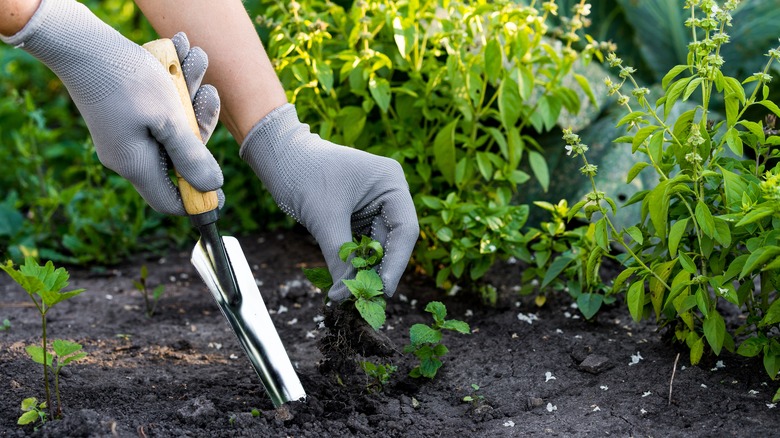What Causes Winter Injury On A Lawn And What Can You Do To Prevent It?
Waiting for the white carpet to melt into a lush green during early spring is agonizing for all gardeners. But the wait isn't worth it when you're met with discolored and bare tuft patches on your lawn. Since sudden temperature drops, frost, snow, and icy, dry winds work in tandem to dash your dreams of enjoying a vibrant verdure come spring, your lawn might suffer from a winter injury. Moreover, improper drainage, steady snow coverage, and high foot traffic make it harder for your turf to avert winter injuries.
Winter injury isn't a standalone concept and encapsulates diverse forms of cold damage, including crown hydration, desiccation, ice encasement, salt damage, and winter kill. You may even have to deal with snow mold and vole action. One solution to minimize cold damage is to deeply water your greens during the fall until the soil temperatures fall below 40 degrees Fahrenheit. Also, avoid pruning and applying nitrogen-rich fertilizers before winter, lest they encourage vulnerable new growth. However, spread potassium sulfate or muriate of potash during early fall to increase your landscape's winter hardiness.
Grounds for winter injury
Sudden temperature oscillations, particularly during the transition to spring, are the root cause of overwintering lawn damage. As the dormant grasses wake up and begin acclimating to the rising temperatures by absorbing water, their crowns freeze if the weather turns frosty again, destroying their tissues or drying them out, resulting in crown hydration. The inverse holds, too. When a prolonged warm fall is followed by a shockingly cold winter, it delays the tuft's hardiness process, causing the crown to ice up and die back as the temperatures drop steadily, leading to winter kill.
If your overwintering turf, especially the cool-season variety, lacks snow insulation and is exposed to arid, cold winds, it may suffer desiccation. As the winds absorb its moisture and the frosty ground doesn't allow for water replacement, it eventually browns and dries out, perishing in extreme cases. Moreover, being encased in ice also damages (and sometimes kills) the dormant blades. As the grasses continue to breathe and use up their oxygen throughout the winter, the casing restricts airflow, causing a lethal buildup of toxic gasses around the turf. Alternatively, if you notice gray or pink irregular patches after the snow melts, it could be that snow mold has been eating away at your grass. Or, if your lawn looks strawy around the driveway, salt damage is the likely culprit.
Preventing winter injury
As poor soils are most vulnerable to crown hydration, minimize damage by improving drainage and keeping weeds and pests out. To prevent winter kill, give your grasses enough time to acclimatize themselves. To do so, move up your seeding schedules to early summer and shun early fall fertilizer applications. Covering your soils with burlaps, heavy sand, or wind barriers before the cold season sets in will block desiccation damage. If the fall has been particularly dry, deeply soak your tuft to ensure sufficient moisture levels.
Apply a 2- to 3-inch-wide mulch layer for added insulation against winter chills. Avoid ice encasement by adding semipermeable topdressings and following it up with straws before placing an opaque cover. However, if this sounds too complicated, simply melt the hardened ice every 30 to 45 days using Milorganite fertilizer or black sand. Moreover, aerate and mow your yard before winter to prevent fungal mold. Also, clear out woodpiles, debris, and even bird feeders that attract voles. Finally, prioritize removing snow mechanically, but if you can't replace salt, limit its quantity and ensure it filters out by improving soil drainage.


